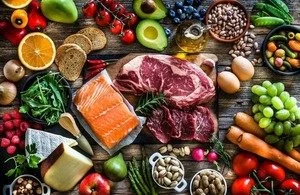Everyone wants a better food system. Are we investing in what it takes?
By Louis Bedwell, Head of Future Food Movement
The UK food system has never been short on ambition. What it has lacked is a clear direction and the capability to deliver it.
The Good Food Cycle changes that. It sets out ten national outcomes for a healthier, fairer and more sustainable system. It puts health at the centre, recognises the value of skills in every region and links supply, resilience and access in ways policymakers rarely do.
It offers a shared signal for where the system needs to go. The challenge now is whether we are collectively ready to respond.
In our most recent network survey, covering businesses responsible for over 70% of the UK grocery market, 72% of senior leaders said the pace of change is outstripping their organisation’s internal capability. They know what needs to shift. But commercial, consumer and climate demands are colliding faster than teams can align around them.
The result is hesitation. Pilot projects that stall. Sustainability leads working without cross functional mandate. Brand, product and commercial teams pulled in different directions. Suppliers absorbing the friction when functions inside one business are not joined up.
You cannot transform a system with people who are not equipped to lead it.
So why is capability still underinvested? Because it is hard to measure, takes time to embed and rarely shows up in quarterly results. But without it, strategy remains theoretical.
That capability gap is now one of the defining risks in UK food. And the system’s ability to act depends on whether businesses are prepared to invest in more than compliance.
This means building fluency across teams. Giving leaders the space to pressure test assumptions, interrogate tensions and move from intention to action. Not in isolation, but together.
In our seven week Healthy Sustainable Diets accelerators, we see this happen in real time. Senior leaders from retail and manufacturing work through shared challenges around reformulation, sourcing and trust. They do not leave with toolkits. They leave with traction. Inside their own businesses and across the supply chains they lead.
And they are not alone. 54% of our network now cite collaboration as the biggest structural shift needed in their supply chains. Not more partnerships. Not surface level engagement. Real, operational collaboration between functions and businesses who want to lead.
The Good Food Cycle sets a welcome direction. But if we want outcomes, we need to invest in the people responsible for delivering them.
That means capability. Confidence. Internal leadership. Shared clarity on what good looks like and what it takes to get there.
Because no matter how bold the outcomes, they will not deliver themselves. And no matter how strong the policy signal, it will only move as fast as the system behind it.
The question is no longer what needs to change. It is whether we are willing to build the capability to change it.
We asked Andy Stephens, Impact Director from COOK (certified B Corp) what the new food strategy means to him:
“The Good Food Cycle paints a compelling, holistic, and ambitious picture of what a better future food system could look like. It also encouraging references some of the current systems failures that need to be addressed, i.e. the junk food cycle and invisibility of nature. As it points out in its Next Step section, the government now needs to stick to this vision. A useful next step to progress on this journey could be broadening the type of businesses it is consulting with. To provide an environment in which a diverse set of dynamic and innovative food businesses can thrive casting the net wider than those included in the Food Strategy Advisory Board would be a sensible move.”
So what does this mean for business?
• Will the ‘how’ follow fast enough to unlock investment and delivery?
• How effective will it be across planning, procurement, regulation and reform?
The challenge is now turning these ideas into action. We need implementation plans that are specific, owned and quantified
– What happens
– Who does it
– When it lands
– How we know it’s working
Delivering this vision will take more than strategy. It will take skills, capacity and the ability to collaborate in new ways. We’re here and ready to help your business on that mission.
Plenty to welcome. Plenty still to shape.

